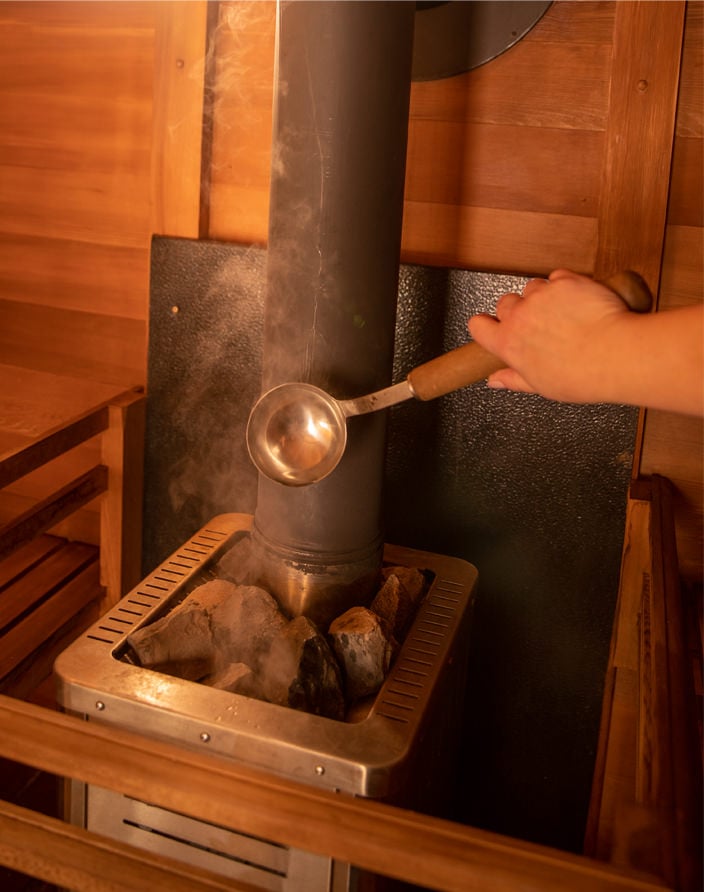There’s something truly timeless and deeply calming about stepping into a wood-burning sauna—the earthy aroma of burning logs, the gentle hiss of steam on heated stones, and the enveloping warmth that melts away stress.
If you’re dreaming of creating a rustic wellness retreat, building your own wood-fired sauna can be a rewarding experience. But to ensure comfort, efficiency, and safety, there are a few key essentials you can’t overlook.
1. Choose the Right Wood for Construction
The
type of wood you use will determine your sauna’s durability and
comfort. Not all timber can withstand the intense heat and humidity.
Western Red Cedar is a top choice thanks to its natural resistance to
rot, excellent insulating properties, and pleasant fragrance. It also
remains cool to the touch, making it ideal for both walls and benches.
2. Invest in Proper Insulation for Heat Retention
Good
insulation is crucial for maintaining a consistent temperature while
minimizing firewood use. It allows the sauna to heat up faster, retain
warmth longer, and protects the surrounding structure from heat damage.

Essential insulation tips:
Use mineral wool or rock wool between wall studs.
Add a vapor barrier—aluminum foil works well—to reflect heat back inside.
Seal all seams tightly to prevent heat loss and moisture buildup.
With proper insulation, you’ll enjoy better energy efficiency, enhanced comfort, and long-term structural stability.
3. Install a Safe and Efficient Chimney System
The chimney does more than vent smoke—it ensures proper airflow, efficient combustion, and overall safety. A well-designed flue prevents smoke from lingering inside the sauna and keeps the fire burning cleanly.
Use stainless steel insulated chimney pipes rated for high temperatures, and position the chimney according to local fire codes. It should be tall enough to ensure proper draft and safe venting. When in doubt, consult a professional or follow detailed installation guidelines—fire safety is absolutely non-negotiable.
4. Build Comfortable and Durable Sauna Benches
Your sauna benches are where you’ll spend most of your time, so they must be sturdy, comfortable, and heat-safe. Softwoods like cedar are ideal since they won’t overheat or splinter.
Consider multi-level seating to let users choose their preferred heat intensity. Ensure smooth edges, proper spacing, and easy-to-clean designs for maximum comfort and hygiene.
5. Manage Moisture with Waterproofing and Ventilation
Because saunas are naturally hot and humid, proper moisture management is essential to prevent mold, rot, and long-term damage.
Install a slightly sloped floor with drainage—tiles or treated wood work well.
Use water-resistant sealants sparingly on exterior surfaces.
Add intake and exhaust vents for proper airflow between sessions.
With the right waterproofing and ventilation, your sauna will remain in great condition for decades.
Final Thoughts
Building a wood-fired sauna is about blending tradition, craftsmanship, and thoughtful design. By choosing quality materials and prioritizing key features like proper insulation, a safe chimney, durable benches, and moisture control, you’ll create a relaxing retreat that lasts for years.
Want to skip the building process? Explore beautifully crafted wood-fired saunas from Northern Lights Cedar Barrel Saunas and bring the warmth of nature to your backyard.
No comments:
Post a Comment